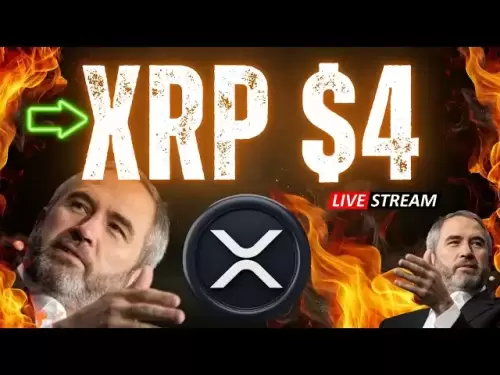-
 Bitcoin
Bitcoin $118300
-1.72% -
 Ethereum
Ethereum $3591
-0.69% -
 XRP
XRP $3.478
-3.53% -
 Tether USDt
Tether USDt $1.001
-0.01% -
 BNB
BNB $737.7
-0.54% -
 Solana
Solana $177.3
-2.40% -
 USDC
USDC $0.9999
-0.01% -
 Dogecoin
Dogecoin $0.2538
7.04% -
 TRON
TRON $0.3256
-0.85% -
 Cardano
Cardano $0.8332
-3.48% -
 Hyperliquid
Hyperliquid $44.80
-3.30% -
 Stellar
Stellar $0.4672
-6.09% -
 Sui
Sui $3.828
-5.98% -
 Chainlink
Chainlink $18.15
-3.41% -
 Hedera
Hedera $0.2655
-7.16% -
 Bitcoin Cash
Bitcoin Cash $517.5
-0.64% -
 Avalanche
Avalanche $23.89
-2.37% -
 Shiba Inu
Shiba Inu $0.00001519
-0.45% -
 UNUS SED LEO
UNUS SED LEO $8.973
0.13% -
 Toncoin
Toncoin $3.211
-2.54% -
 Litecoin
Litecoin $103.5
-3.58% -
 Polkadot
Polkadot $4.313
-3.90% -
 Uniswap
Uniswap $10.31
0.67% -
 Monero
Monero $325.4
-2.88% -
 Bitget Token
Bitget Token $5.049
3.51% -
 Ethena USDe
Ethena USDe $1.002
0.04% -
 Pepe
Pepe $0.00001346
-2.96% -
 Dai
Dai $0.9999
-0.02% -
 Aave
Aave $322.1
-2.93% -
 Bittensor
Bittensor $411.9
-4.70%
How to view AVAX's historical transaction records?
To view AVAX's historical transaction records, use blockchain explorers like Snowtrace, analytical tools like Nansen, or wallet apps like MetaMask connected to the Avalanche network.
Apr 21, 2025 at 12:42 pm

How to View AVAX's Historical Transaction Records?
Understanding how to view the historical transaction records of AVAX, the native cryptocurrency of the Avalanche blockchain, is essential for investors, traders, and enthusiasts who want to track the performance and movements of their assets. This article will guide you through the process of accessing and analyzing AVAX's historical transaction data using various tools and platforms available in the cryptocurrency ecosystem.
Understanding AVAX and the Avalanche Blockchain
AVAX is the native cryptocurrency of the Avalanche blockchain, a decentralized platform designed for high-throughput and fast transaction processing. The Avalanche network consists of multiple subnets, each capable of processing transactions independently, which contributes to its scalability and efficiency. To view AVAX's historical transaction records, you need to understand that these transactions are recorded on the Avalanche blockchain and can be accessed through various blockchain explorers and analytical tools.
Using Blockchain Explorers to View AVAX Transactions
Blockchain explorers are essential tools for anyone looking to delve into the historical transaction records of any cryptocurrency, including AVAX. These platforms provide a user-friendly interface to search for and analyze transaction data. Here's how you can use a blockchain explorer to view AVAX's historical transactions:
Choose a Reliable Blockchain Explorer: Some popular blockchain explorers for the Avalanche network include Snowtrace and Avalanche Explorer. These platforms allow you to search for specific transactions, addresses, and blocks.
Search for Transactions: Once you have selected a blockchain explorer, you can search for AVAX transactions by entering the transaction hash, wallet address, or block number. For example, if you want to view transactions associated with a specific wallet, enter the wallet address in the search bar.
Analyze Transaction Details: After locating a transaction, you can view detailed information such as the sender and recipient addresses, transaction amount, timestamp, and transaction fee. This data can help you understand the flow of AVAX across the network.
Using Analytical Tools for Deeper Insights
In addition to blockchain explorers, there are specialized analytical tools that can provide deeper insights into AVAX's historical transaction records. These tools often offer advanced features such as data visualization, trend analysis, and customizable reports. Here's how you can use these tools:
Select an Analytical Platform: Platforms like Nansen, Dune Analytics, and CryptoQuant offer comprehensive data analysis for various cryptocurrencies, including AVAX. These platforms require you to sign up and may offer both free and paid services.
Import Data: Once you have access to an analytical platform, you can import AVAX transaction data from the Avalanche blockchain. This may involve setting up a query or using pre-built dashboards designed for AVAX.
Analyze and Visualize Data: Use the platform's tools to analyze and visualize the data. You can create charts, graphs, and reports to track AVAX's transaction volume, price movements, and other metrics over time. This can help you identify patterns and trends in AVAX's historical transaction records.
Accessing AVAX Transaction Data through APIs
For those with programming skills, accessing AVAX's historical transaction records through APIs (Application Programming Interfaces) can provide even more flexibility and control. APIs allow you to retrieve and process data programmatically, which can be useful for creating custom applications or integrating data into existing systems. Here's how you can use APIs to access AVAX transaction data:
Choose an API Provider: Several providers offer APIs for the Avalanche blockchain, such as the official Avalanche API and third-party services like Moralis. These APIs allow you to retrieve transaction data in real-time or historical data as needed.
Set Up API Access: To use an API, you typically need to sign up for an API key or token. Follow the provider's instructions to obtain your API credentials.
Write API Requests: Use a programming language like Python or JavaScript to write API requests. You can retrieve transaction data by specifying parameters such as transaction hash, block number, or address. Here's an example of how you might retrieve transaction data using Python and the Avalanche API:
import requestsapi_key = "YOUR_API_KEY"
transaction_hash = "YOUR_TRANSACTION_HASH"
url = f"https://api.avax.network/ext/bc/C/rpc?api_key={api_key}"
payload = {
"jsonrpc": "2.0",
"id": 1,
"method": "eth_getTransactionByHash",
"params": [transaction_hash]
}
response = requests.post(url, json=payload)
transaction_data = response.json()
print(transaction_data)
- Process and Analyze Data: Once you have retrieved the transaction data, you can process and analyze it using your preferred programming tools. This allows you to customize your analysis and integrate it into other applications or systems.
Using Wallet Applications to View Transaction History
Many cryptocurrency wallet applications that support AVAX also provide features to view your transaction history. These applications are convenient for users who want to quickly check their transaction records without needing to use external tools. Here's how you can use a wallet application to view AVAX's historical transactions:
Choose a Compatible Wallet: Select a wallet that supports AVAX, such as MetaMask, Avalanche Wallet, or Ledger Live. Ensure that your wallet is connected to the Avalanche network.
Access Transaction History: Once you have logged into your wallet, navigate to the transaction history or activity section. This section will display a list of your recent AVAX transactions, including the date, amount, and status of each transaction.
View Detailed Information: Click on a specific transaction to view more detailed information, such as the transaction hash, sender and recipient addresses, and transaction fee. This can help you track the movement of your AVAX holdings over time.
Frequently Asked Questions
Q: Can I view AVAX transaction records from any blockchain explorer?
A: While most blockchain explorers that support the Avalanche network will allow you to view AVAX transaction records, the level of detail and features may vary. It's recommended to use explorers specifically designed for Avalanche, such as Snowtrace or Avalanche Explorer, for the most comprehensive data.
Q: Are there any privacy concerns when viewing AVAX transaction records?
A: Yes, since blockchain transactions are public, anyone can view the details of AVAX transactions, including the sender and recipient addresses. To maintain privacy, it's advisable to use new addresses for each transaction and consider using privacy-enhancing tools if available.
Q: Can I export AVAX transaction data for further analysis?
A: Yes, many blockchain explorers and analytical tools offer options to export transaction data in various formats such as CSV or JSON. This allows you to perform further analysis using external tools or programming languages.
Q: How far back can I view AVAX transaction records?
A: The availability of historical transaction records depends on the blockchain explorer or analytical tool you are using. Most platforms will allow you to view transactions from the genesis block of the Avalanche network, but the speed and ease of accessing older data may vary.
Disclaimer:info@kdj.com
The information provided is not trading advice. kdj.com does not assume any responsibility for any investments made based on the information provided in this article. Cryptocurrencies are highly volatile and it is highly recommended that you invest with caution after thorough research!
If you believe that the content used on this website infringes your copyright, please contact us immediately (info@kdj.com) and we will delete it promptly.
- Bitcoin, Nexchain, and Presales: What's Hot in the Crypto Space?
- 2025-07-19 16:30:12
- Presales, ICOs, and 100x Returns: Navigating the Crypto Landscape in 2025
- 2025-07-19 16:30:12
- Crypto Picks: Navigating the Meme Coin Mania – Toshi, Ski Mask Dog, and the Elusive Pepe Coin 30,000% Rally
- 2025-07-19 14:30:13
- SUI Blockchain, Unilabs, and Curve Finance: A New Era of Crypto Investments?
- 2025-07-19 15:10:12
- Riding the Altcoin Wave: ADA Price, XRP Surges, and the Season of Opportunity
- 2025-07-19 15:30:12
- MoonBull, Meme Coins, and Your Watchlist: What's Hot Right Now
- 2025-07-19 14:30:13
Related knowledge

How to add indicators to Ethereum chart on TradingView?
Jul 19,2025 at 07:15am
What Is an Ethereum Chart on TradingView?The Ethereum chart on TradingView is a visual representation of the price movement of Ethereum (ETH) over a s...
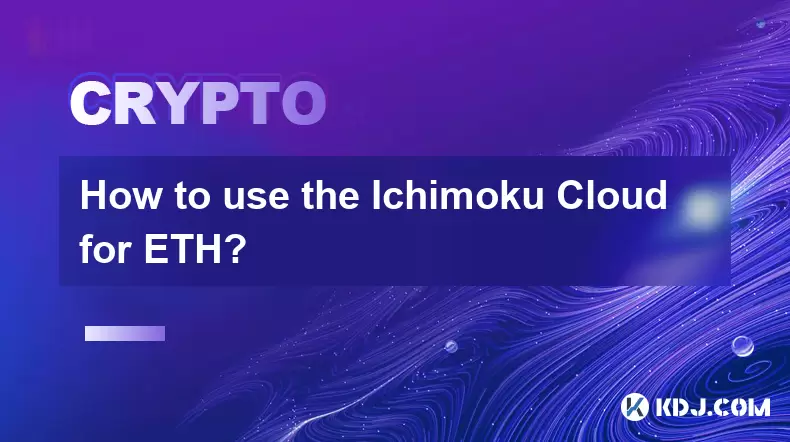
How to use the Ichimoku Cloud for ETH?
Jul 18,2025 at 09:56pm
Understanding the Ichimoku Cloud and Its ComponentsThe Ichimoku Cloud, also known as Ichimoku Kinko Hyo, is a versatile technical analysis tool that p...
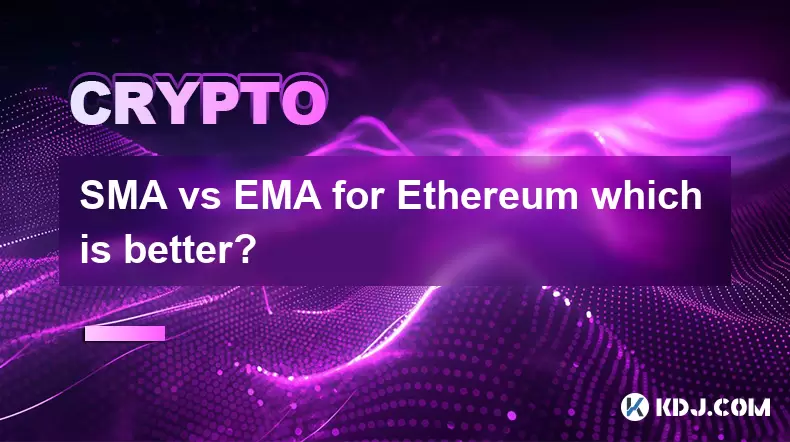
SMA vs EMA for Ethereum which is better?
Jul 19,2025 at 12:36am
Understanding the Basics of SMA and EMAIn the world of cryptocurrency trading, especially when dealing with Ethereum, technical indicators play a cruc...
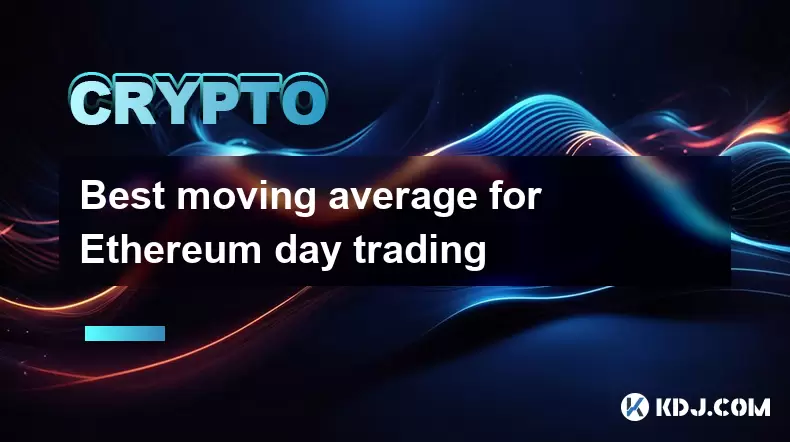
Best moving average for Ethereum day trading
Jul 19,2025 at 01:42am
Understanding the Role of Moving Averages in Ethereum Day TradingIn the realm of Ethereum day trading, moving averages are indispensable tools for ide...

What is RSI indicator for Ethereum?
Jul 19,2025 at 03:07pm
Understanding the RSI IndicatorThe Relative Strength Index (RSI) is a momentum oscillator used in technical analysis to measure the speed and change o...
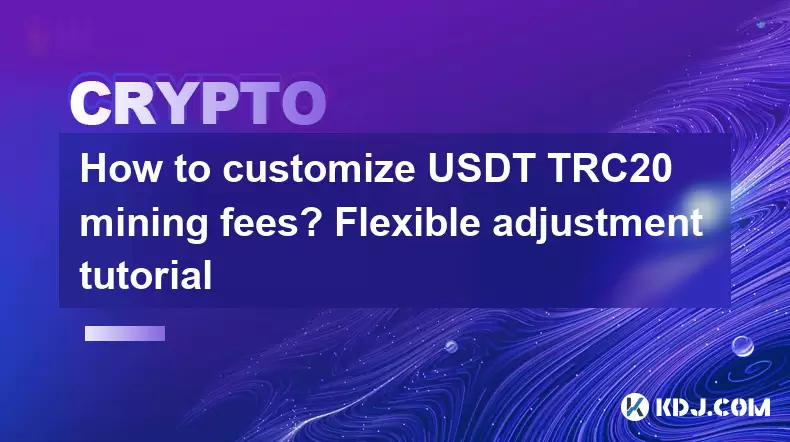
How to customize USDT TRC20 mining fees? Flexible adjustment tutorial
Jun 13,2025 at 01:42am
Understanding USDT TRC20 Mining FeesMining fees on the TRON (TRC20) network are essential for processing transactions. Unlike Bitcoin or Ethereum, whe...

How to add indicators to Ethereum chart on TradingView?
Jul 19,2025 at 07:15am
What Is an Ethereum Chart on TradingView?The Ethereum chart on TradingView is a visual representation of the price movement of Ethereum (ETH) over a s...

How to use the Ichimoku Cloud for ETH?
Jul 18,2025 at 09:56pm
Understanding the Ichimoku Cloud and Its ComponentsThe Ichimoku Cloud, also known as Ichimoku Kinko Hyo, is a versatile technical analysis tool that p...

SMA vs EMA for Ethereum which is better?
Jul 19,2025 at 12:36am
Understanding the Basics of SMA and EMAIn the world of cryptocurrency trading, especially when dealing with Ethereum, technical indicators play a cruc...

Best moving average for Ethereum day trading
Jul 19,2025 at 01:42am
Understanding the Role of Moving Averages in Ethereum Day TradingIn the realm of Ethereum day trading, moving averages are indispensable tools for ide...

What is RSI indicator for Ethereum?
Jul 19,2025 at 03:07pm
Understanding the RSI IndicatorThe Relative Strength Index (RSI) is a momentum oscillator used in technical analysis to measure the speed and change o...

How to customize USDT TRC20 mining fees? Flexible adjustment tutorial
Jun 13,2025 at 01:42am
Understanding USDT TRC20 Mining FeesMining fees on the TRON (TRC20) network are essential for processing transactions. Unlike Bitcoin or Ethereum, whe...
See all articles

























